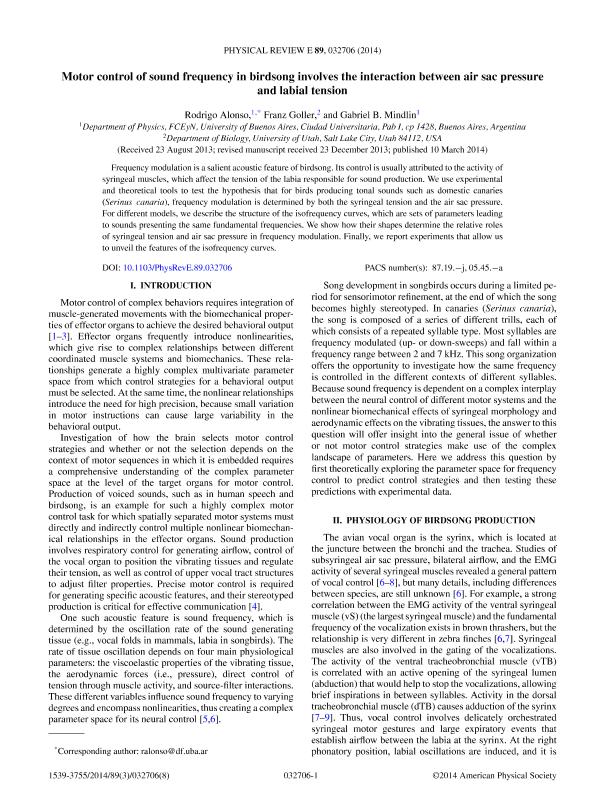Artículo
Motor control of sound frequency in birdsong involves the interaction between air sac pressure and labial tension
Fecha de publicación:
03/2014
Editorial:
American Physical Society
Revista:
Physical Review E: Statistical, Nonlinear And Soft Matter Physics
ISSN:
1539-3755
Idioma:
Inglés
Tipo de recurso:
Artículo publicado
Clasificación temática:
Resumen
Frequency modulation is a salient acoustic feature of birdsong. Its control is usually attributed to the activity of syringeal muscles, which affect the tension of the labia responsible for sound production. We use experimental and theoretical tools to test the hypothesis that for birds producing tonal sounds such as domestic canaries (Serinus canaria), frequency modulation is determined by both the syringeal tension and the air sac pressure. For different models, we describe the structure of the isofrequency curves, which are sets of parameters leading to sounds presenting the same fundamental frequencies. We show how their shapes determine the relative roles of syringeal tension and air sac pressure in frequency modulation. Finally, we report experiments that allow us to unveil the features of the isofrequency curves.
Palabras clave:
Birdsong
,
Nonlinear
,
Phonation
,
Neuroscience
Archivos asociados
Licencia
Identificadores
Colecciones
Articulos(IFIBA)
Articulos de INST.DE FISICA DE BUENOS AIRES
Articulos de INST.DE FISICA DE BUENOS AIRES
Citación
Alonso, Rodrigo; Goller, Franz; Mindlin, Bernardo Gabriel; Motor control of sound frequency in birdsong involves the interaction between air sac pressure and labial tension; American Physical Society; Physical Review E: Statistical, Nonlinear And Soft Matter Physics; 89; 3; 3-2014; 1-8; 032706
Compartir
Altmétricas




